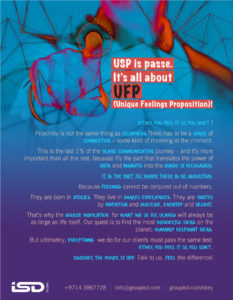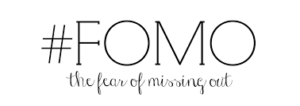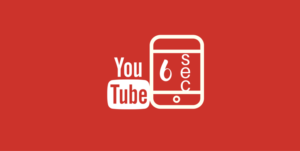Tag: social media
Marketing the new ‘Terms ‘ of endearment
Marketing the New ‘Terms’ of Endearment
Over the years, tried and oft used terms in the world of business and marketing have transcended convention. We seem to be in a perennial state of having to come to terms with these terms. Here is the term sheet on that.
Brand Owners, Advertisers and Marketers were once cosy with ‘ Mass Market ‘. Try and reach the maximum audience numbers through mass media. A lot of the times it was about Spray and Pray. Mass Market transitioned to ‘ Mass Customisation ‘ which went beyond one size fits all to one size fitting some. With the advent of Artificial Intelligence, Machine Learning and Data Science, we are now in an era of the ‘ Customer Segment of One ‘, where one individual as an audience is targeted with high degree of precision and success.
The disclaimers have been turned on its head as well. What used to be common place was a term going as ‘ Caveat Emptor ‘ which essentially was to say buyers beware. The entire onus and risk on buying a product or service was all on the buyer/end user. Now, in an over commoditised world, where we have moved on from push and control to pull and engage, where top down has given way to bottom up marketing, what is evident is ‘ Caveat Venditor ‘, where the accountability and responsibility rests fully on the seller. The wheel has gone a full circle.
Not until long ago, brands and their marketing plans were etched out keeping demographic groups in mind. A pre decided age group with a certain buyer persona was carved out and communication was created to influence and impact that community. The universe has changed dramatically. Brand marketers have now started addressing mindsets which throws conventional wisdom out of the window. As they have now begun to chant, RIP Demographics!
Consumer aspirations have taken a twist as well. Yesteryears we had all marketing and communication created to induce brand ownership. With so much millennial consumption happening, the entire paradigm has now shifted to owning experiences. The new brand mantra for marketers is CeX(Customer Experience) and the City. Ownership is passe, experience is the new aspiration.
Remember those days when the quintessential manna from heaven was ‘ brand loyalty ‘. Coveted, treasured, revered. Loyalty was royalty. In an era of surplus of goods, information, choices, services and a deficit of trust, attention and resources, ‘ customer infidelity ‘ has replaced loyalty. Cheaper, better, faster? Here we shift loyalties!
We were just coming to terms with the ‘ knowledge economy ‘ as it moved on from the ‘ Industrial Economy ‘and before we knew it we were bang in the middle of the ‘sharing/collaborative economy‘. The dust had hardly settled on that and now the entire attention is rooted on the ‘ attention economy ‘. In an age of perennial distraction, attention is the new premium.
Since advent of marketing, and the quest for differentiation, the narrative has revolved around a USP(Unique Selling Proposition). That feature or benefit which makes your brand distinct or unique from other competitors in the eco system.Then came the not so holy communion onslaught- the SOS- Sea of Sameness. Nothing unique, nothing distinct, the herd mentality, the also ran, the me too. Which prompted our research at ISD Global to discover what we have come to label as UFP- Unique Feelings Proposition– where state of the heart is what brands are appealing to win trust, loyalty, mind and wallet space.

Am sure we will have more to chew on as the intersection of consumer behaviour, rapid evolution of technology and the ever changing socio economic landscape will throw up more perspectives that we have to come to terms with. Till then, au revoir.
ENDS
www.groupisd.com/story
www.brandknewmag.com
Oh NO: It’s FOMO(The Fear Of Missing Out)!

Didn’t want to miss out on posting this..
For a while I have been trying to wrap my head around the FOMO concept( Fear Of Missing Out I am given to understand by some social media pundits who have won a lot of plaudits)..
For the average Jane and Joe(like me), it means because we tend to feel the pain of a loss more deeply than the pleasure of a gain, we are more likely to embrace something if we think it will help us avoid missing out.
Phew, got it out of the way..Status anxiety I dare say..
ENDS
Image: Odyssey
www.groupisd.com
www.brandknewmag.com
Is the 30-second ad dying?
The death of an advertising stalwart!
Well it surely appears so. And Silicon Valley is killing it.The rise of social media has made the elaborate plot lines of old-school spots seem archaic. And the Mad Men are, well, mad.Or, so was the fad!
Trapeze back to the days of the 30 second long format ads(long by today’s standards) where marketers, brand owners, agency heads, creative directors, art directors and film makers peddled a basketful of promise, creative thought and motivation to influence the seemingly reachable TG in their quest to change behaviours, cultures and consumption patterns. There was a certain trance in that romance to create.

So what is prompting the change? In an always on land of uncertainty, are we losing the plot(and losing the audience) or has the landscape itself changed?
6 is the new 30
They say 20 is the new 40 when it comes to audience maturity and demographics. Platforms like YouTube have increasingly challenged agencies to tell their stories in a 6-second slot — the average attention span of today’s mobile user. That mobile user, who again by conventional paradigm, is on a perennial instant fatigue. So 30 seconds is a long journey to risk with them! 6 has indeed become the new 30. And numbers don’t lie!
It makes sense. You might be willing to sit through a 3-minute trailer before a movie, or a 30-second “Whassup” ad before an episode of Jimmy Fallon.That may come across as non intrusive or no skin of your back. But amidst the native content of notoriously short-form channels like Instagram or Snapchat, these types of ads are disproportionately long. So much so, that they may pre qualify to be spam! Just kidding.
And for all those who are number crunchers: if we had a nickel for every 60-second YouTube video we gave up on because of an unskippable 30-second ad, we’d be at least $1.25 richer. What will you do for a few dollars more?
“Creativity is dead.” — Old School Advertisers
That almost seems like an Old Jungle saying(remember Phantom is rough with roughnecks!!!).
Ad execs counter that cutting time means sacrificing emotional stakes and story arc for the sake of speed, effectively prioritizing watchability over effectiveness.
Another, not-so-secret motive: it’s harder to get paid proportionally for the production of super-short ads, which still require actors and equipment.The CFO and CMO lines have been blurring and the motive should not surprise us.
Hey, we love Ogilvy as much as the next ad geek. But as the father of mass media, Marshall McLuhan, put it back in the ‘60s: “The medium is the message.” Yes, we now surely get the message.
And today’s medium is 6-second Snap Stories. And it has to be over in a snap. Otherwise today’s audience will snap out of it.So the mean median for a message is all coming down to 6 in the City(and beyond).
So, Lights, Camera….do we have the time to say Action?
ENDS
www.groupisd.com
www.brandknewmag.com
Image: Digitalvidya
Emotions that have no speed limit when it comes to virality !
If one were to go granular with the emotions’ basket, we would have the following and more in the bucket list:Happiness/Joy; Sadness/Depression; Rage/Anger; Pride/Prejudice; Disgust/Disillusionment; Wonder/Awe and so on and so forth.
Researchers at the Beihang University in China gauged various online emotions by tracking emoticons embedded in millions of messages posted on Sina Weibo, a popular Twitter-like microblogging platform. Their conclusion: Joy moves faster than sadness or disgust, but nothing is speedier than rage. The researchers found that users reacted most angrily—and quickly—to reports concerning “social problems and diplomatic issues”. It’s diabolical that a strong anti social emotion like rage gets the maximum social attention and currency!!!
In many cases, these ‘ social flare ups ‘ triggers a chain reaction of anger with multiple circles of the social community getting influenced and participating with equal or more venom.
In another study conducted by Jonah Berger and a colleague at Wharton based on 7000 articles covered by The New York Times, they discovered that if there was one emotion that overtook rage in billings, it was awe. The wonder and excitement of a new discovery of beauty or knowledge or a breakthrough in the fight against cancer; puts awe as an emotion in overdrive thus heaping bagfuls of viral.“Awe gets our hearts racing and our blood pumping,” Berger says. “This increases our desire for emotional connection and drives us to share.”
For all those who thought that sadness would emerge triumphant in the race to viral stardom, sorry to disappoint you. Sadness was considered to be a ‘ deactivating emotion ‘ where people pull down or withdraw leaving it with little torque to go the distance. If you feel a little melancholic about it, let that stay.
So, the next time you see or experience road rage, talk yourself into believing that it need not be infectious(or go viral).
ENDS
groupisd.com
brandknewmag.com
